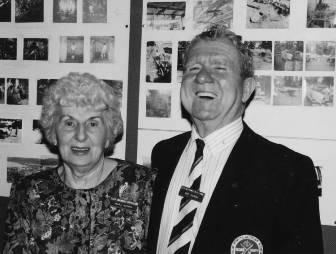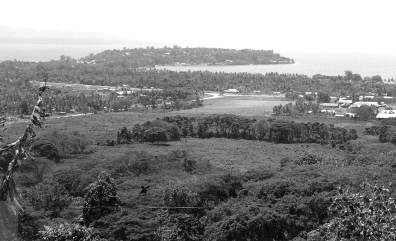
PNGAA Library
Edward (Ted) Kenna, VC: Charles Betteridge


Edward (Ted) Kenna was born in Hamilton, Victoria, on 6 July 1919. He died there on 8 July 2009, aged 90 years and two days. He was the last surviving Australian Victoria Cross winner from the Second World War.
He completed his education in his home town becoming a plumber. He enlisted in the Australian Imperial Force in August 1940 and served in the 23/21st Battalion in Victoria and later in the Darwin area. In June 1943 his unit returned to Victoria before being sent to Queensland. At this point the unit was disbanded and its members allotted as reinforcements to other units. Kenna was assigned to the 2/4th Battalion and embarked to New Guinea in October 1944.
On 15 May 1945, Kenna was involved in action on Mission Ridge (now Mission Hill), Wewak, New Guinea. Private Kenna’s Company had the task of capturing certain enemy positions. The only position from which observation for supporting fire could be obtained was continuously swept by enemy heavy machine-gun fire and it was not possible to bring artillery or mortars into action. Private Edward Kenna’s platoon was ordered forward to deal with the enemy machine-gun post, so that the Company’s operation could proceed. When the attacking sections came into view of the enemy they were immediately engaged at very close range by heavy automatic fire from a position not previously disclosed. Casualties were suffered and Kenna’s platoon could not move further forward. Private Kenna endeavoured to put his Bren gun into a position where he could engage the Japanese bunker but was unable to do so because of the nature of the ground. On his own initiative and without orders private Kenna stood up in full view of the enemy less than 50 yards away and engaged the bunker, firing his Bren gun from the hip. He remained completely exposed and continued to fire at the enemy until his magazine was exhausted. Still making a target of himself, Private Kenna discarded his Bren gun and called for a rifle. Despite the intense machine-gun fire, he seized the rifle and with amazing coolness killed the gunner with his first round. A second automatic opened fire on Private Kenna from a different position and another of the enemy immediately tried to move into position behind the first machine gun, but Private Kenna remained standing and killed him with his next round.
The result of Kenna’s magnificent bravery in the face of concentrated fire was that the bunker was captured without further loss. The company attack proceeded to a successful conclusion. There is no doubt that the success of the company attack would have been seriously endangered and many casualties sustained, but for Private Kenna’s magnificent courage and complete disregard for his own safety. His action was an outstanding example of the highest degree of bravery.
Three weeks after this incident, while Kenna was on patrol near Ambunti he was shot through the mouth by a Japanese sniper. The bullet passed through both cheeks of his mouth shattering some jaw bone in the process. He was rushed first to Townsville hospital then for repatriation to the Heidelberg Military Hospital in Victoria. He spent more than a year in hospital before being discharged from the AIF in 1946.
It was while he was in hospital that he learnt of the Japanese surrender. In 1947 Kenna married the dark haired nurse (Marjorie Rushberry) who had nursed him at Heidelberg Military Hospital. After his discharge from hospital, Kenna returned to Hamilton. Proud of their Victoria Cross winner, the people of Hamilton district raised sufficient funds to build Kenna and his wife a house which remains the family home. The Kennas had four children. After the war he worked with the local council and played Australian Rules football for the local team.
While I was living in Wewak between 1974 and 1979 I became quite interested in the Second World War activities and especially the final months of the war. I also found out about Kenna’s heroic deed and looked over original maps of the battle plans for the Wewak campaign that were held in the 2nd Pacific Islands Regiment at Moem Barracks some 10 km out from Wewak to see where this action took place.
On Friday night 21 October 1994, a reunion of the 2/4th Infantry Battalion took place at the Ballina RSL Club. I attended that reunion and I managed to meet personally Edward Kenna and his wife Marjorie. When I told Edward of my five years in Wewak and my quest to find the location of where his heroic action took place (I had with me a military map of Mission Ridge and Wewak in general), he was able to point out on my map virtually the exact spot where the action took place.
Edward, his wife Marjorie and I had a good chat together for over five minutes or so and I found him a really kind hearted and warm person to know.
On a return visit to Wewak three years later I used the maps I’d shown Kenna and I was able to stand virtually on the same spot where he did battle against the Japanese machine-guns. I still wonder to this day what made him do that heroic deed especially in the area where the action took place and facing such immense enemy fire. I’ve seen the type of Japanese machine guns Kenna faced on that day, they were known by the Allies as a ‘Woodpecker’ because of their slower firing action but the bullets they fired were at least twice the diameter of the bullets in the weapons used by the Australian companies at the time.
